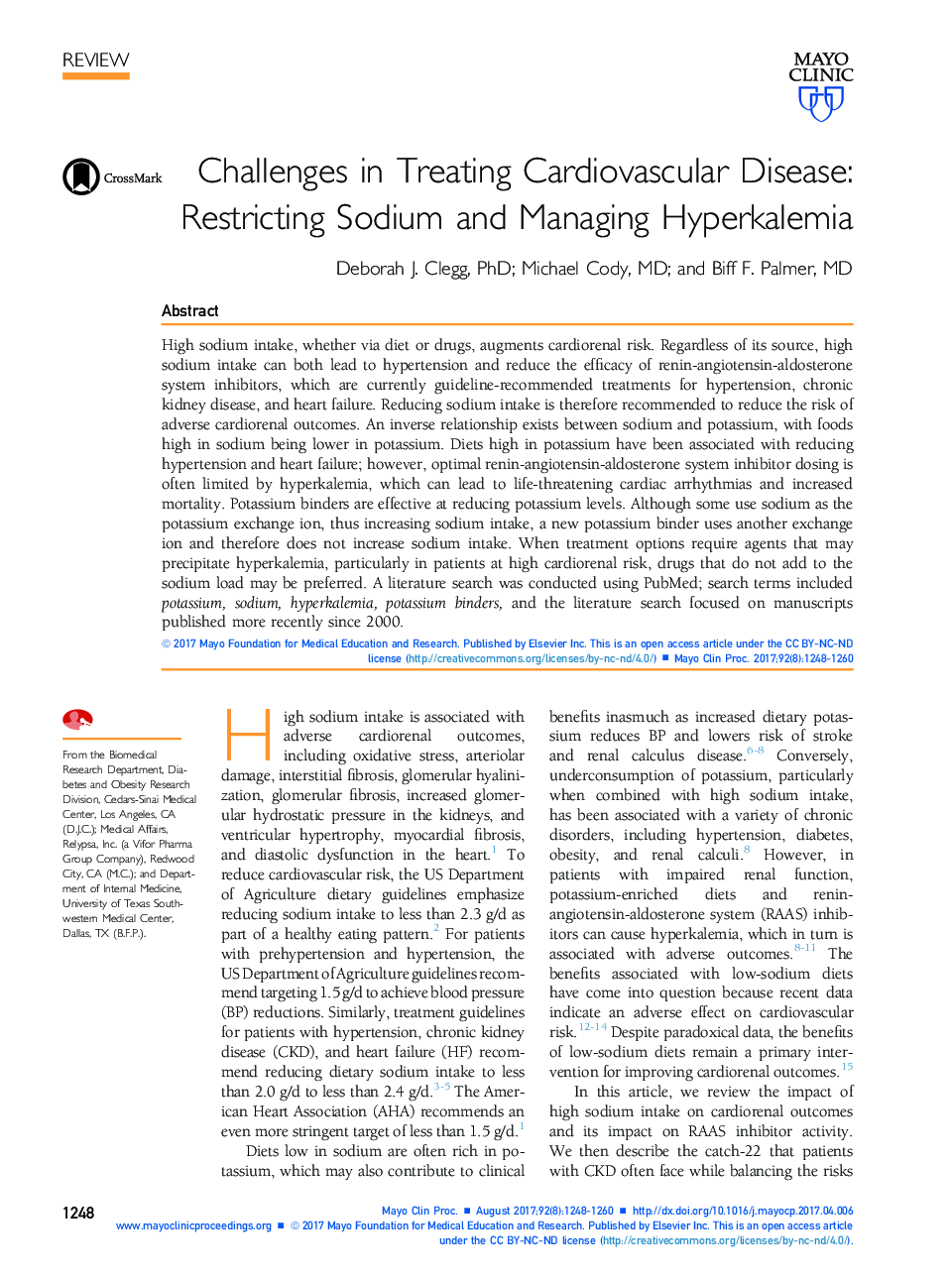| کد مقاله | کد نشریه | سال انتشار | مقاله انگلیسی | نسخه تمام متن |
|---|---|---|---|---|
| 8673623 | 1578845 | 2017 | 13 صفحه PDF | دانلود رایگان |
عنوان انگلیسی مقاله ISI
Challenges in Treating Cardiovascular Disease: Restricting Sodium and Managing Hyperkalemia
ترجمه فارسی عنوان
چالشهای درمان بیماری قلبی عروقی: محدود کردن سدیم و مدیریت هیپرکالمی
دانلود مقاله + سفارش ترجمه
دانلود مقاله ISI انگلیسی
رایگان برای ایرانیان
کلمات کلیدی
SPSFDAADHFGFRNYHARAASARBACESBPDBPAHAMyocardial infarction - آنفارکتوس میوکاردAngiotensin-converting enzyme - آنژیوتانسین تبدیل آنزیمInterdialytic weight gain - افزایش وزن بیندازیAmerican Heart Association - انجمن قلب آمریکاNew York Heart Association - انجمن قلب نیویورکLos - اینchronic kidney disease - بیماری مزمن کلیویESRD یا end stage renal disease - بیماری کلیوی در مرحله نهایی End-stage renal disease - بیماری کلیوی در مرحله پایانیDiastolic BP - دیاستولیک BPRein - رینFood and Drug Administration - سازمان غذا و داروsodium polystyrene sulfonate - سدیم پلی استایرن سولفوناتRenin-angiotensin-aldosterone system - سیستم رنین-آنژیوتانسین-آلدوسترونacute decompensated heart failure - ضربان قلب نارسایی حادlength of stay - طول مدت اقامتSystolic BP - فشار خون سیستولیکBlood pressure - فشارخونAngiotensin receptor blocker - مسدود کننده گیرنده آنژیوتانسینheart failure - نارسایی قلبیCKD - نارسایی مزمن کلیهGlomerular filtration rate - نرخ فیلتراسیون گلومرولیhazard ratio - نسبت خطر
موضوعات مرتبط
علوم پزشکی و سلامت
پزشکی و دندانپزشکی
کاردیولوژی و پزشکی قلب و عروق
چکیده انگلیسی
High sodium intake, whether via diet or drugs, augments cardiorenal risk. Regardless of its source, high sodium intake can both lead to hypertension and reduce the efficacy of renin-angiotensin-aldosterone system inhibitors, which are currently guideline-recommended treatments for hypertension, chronic kidney disease, and heart failure. Reducing sodium intake is therefore recommended to reduce the risk of adverse cardiorenal outcomes. An inverse relationship exists between sodium and potassium, with foods high in sodium being lower in potassium. Diets high in potassium have been associated with reducing hypertension and heart failure; however, optimal renin-angiotensin-aldosterone system inhibitor dosing is often limited by hyperkalemia, which can lead to life-threatening cardiac arrhythmias and increased mortality. Potassium binders are effective at reducing potassium levels. Although some use sodium as the potassium exchange ion, thus increasing sodium intake, a new potassium binder uses another exchange ion and therefore does not increase sodium intake. When treatment options require agents that may precipitate hyperkalemia, particularly in patients at high cardiorenal risk, drugs that do not add to the sodium load may be preferred. A literature search was conducted using PubMed; search terms included potassium, sodium, hyperkalemia, potassium binders, and the literature search focused on manuscripts published more recently since 2000.
ناشر
Database: Elsevier - ScienceDirect (ساینس دایرکت)
Journal: Mayo Clinic Proceedings - Volume 92, Issue 8, August 2017, Pages 1248-1260
Journal: Mayo Clinic Proceedings - Volume 92, Issue 8, August 2017, Pages 1248-1260
نویسندگان
Deborah J. PhD, Michael MD, Biff F. MD,
